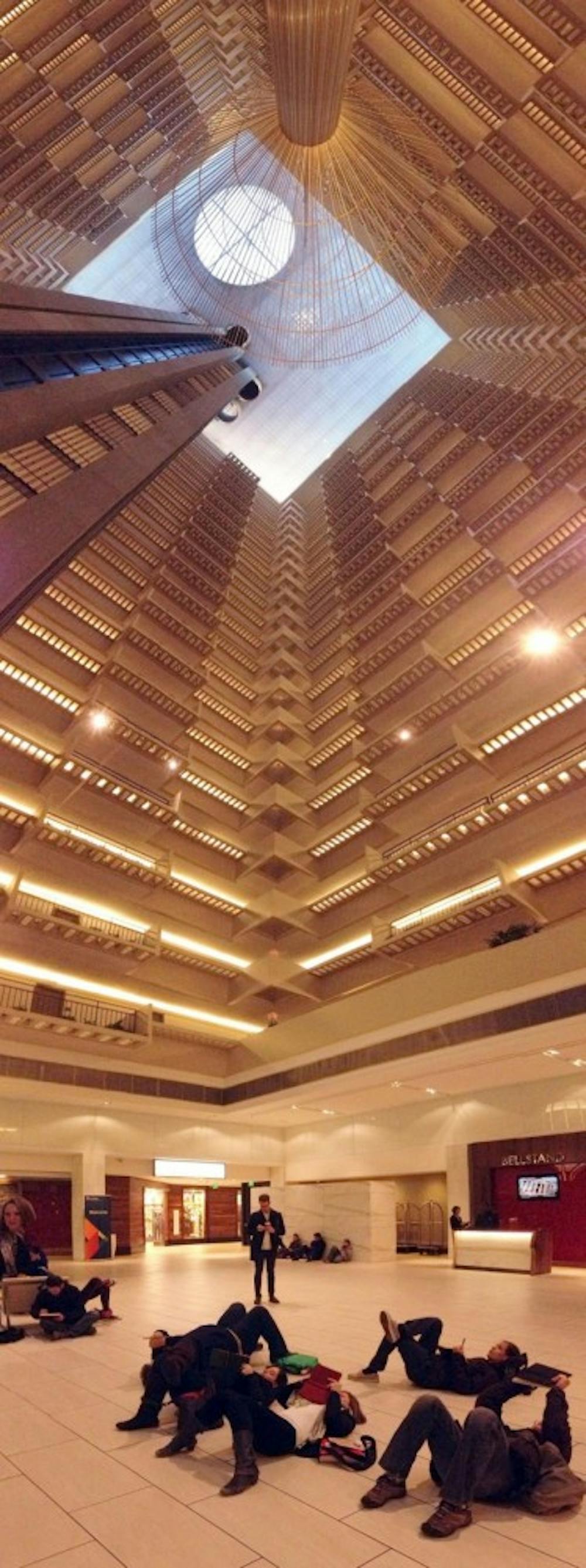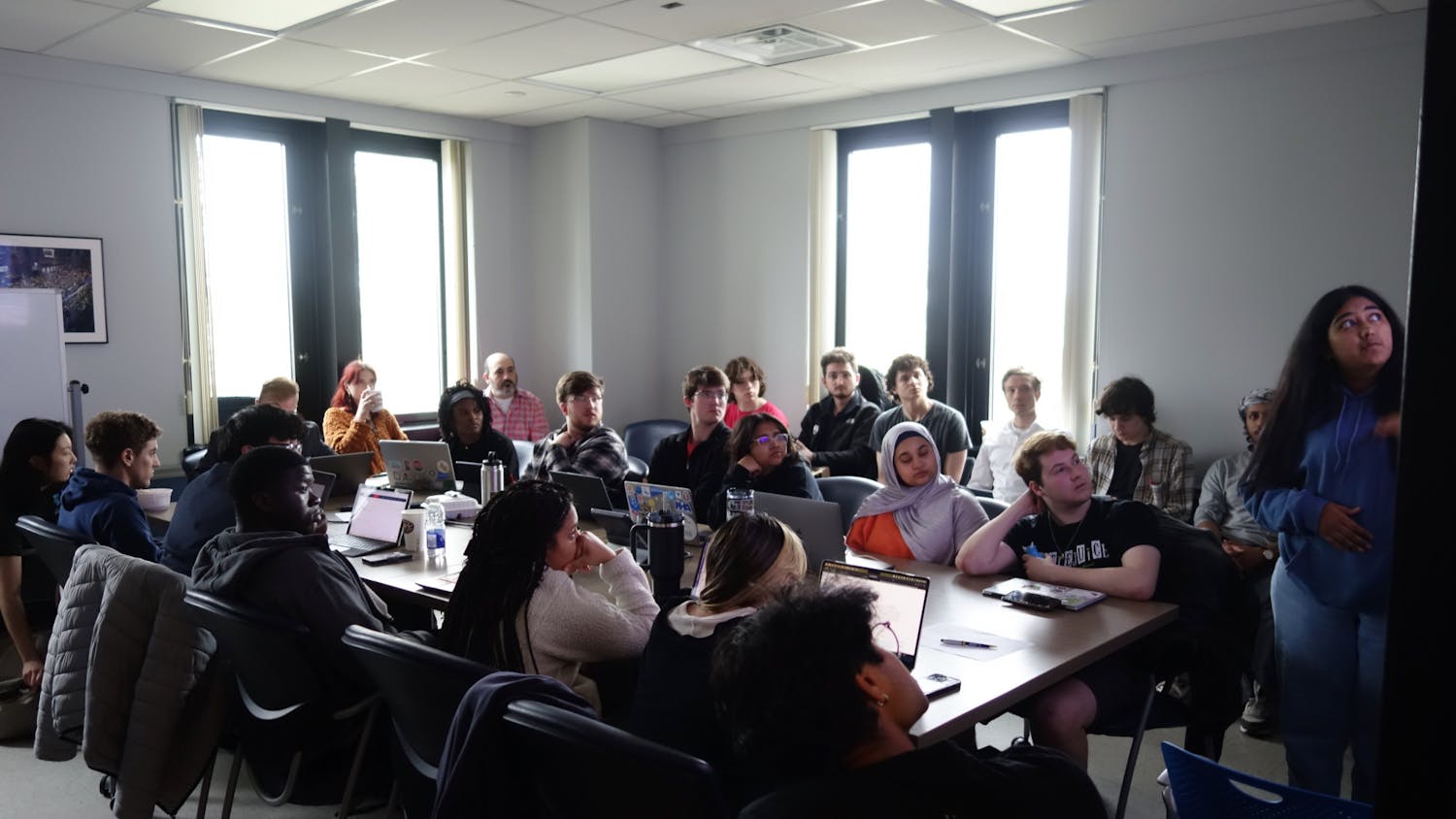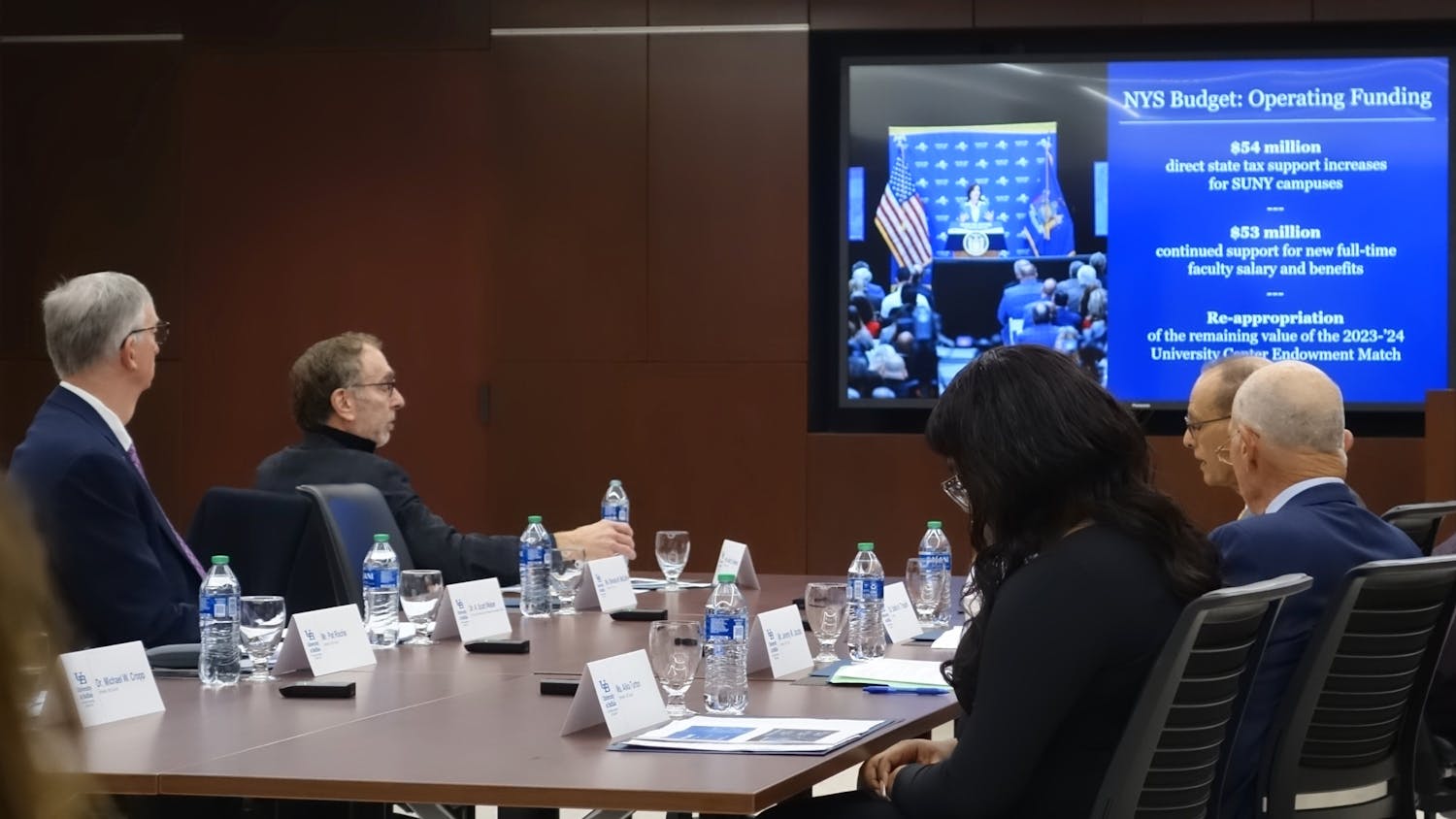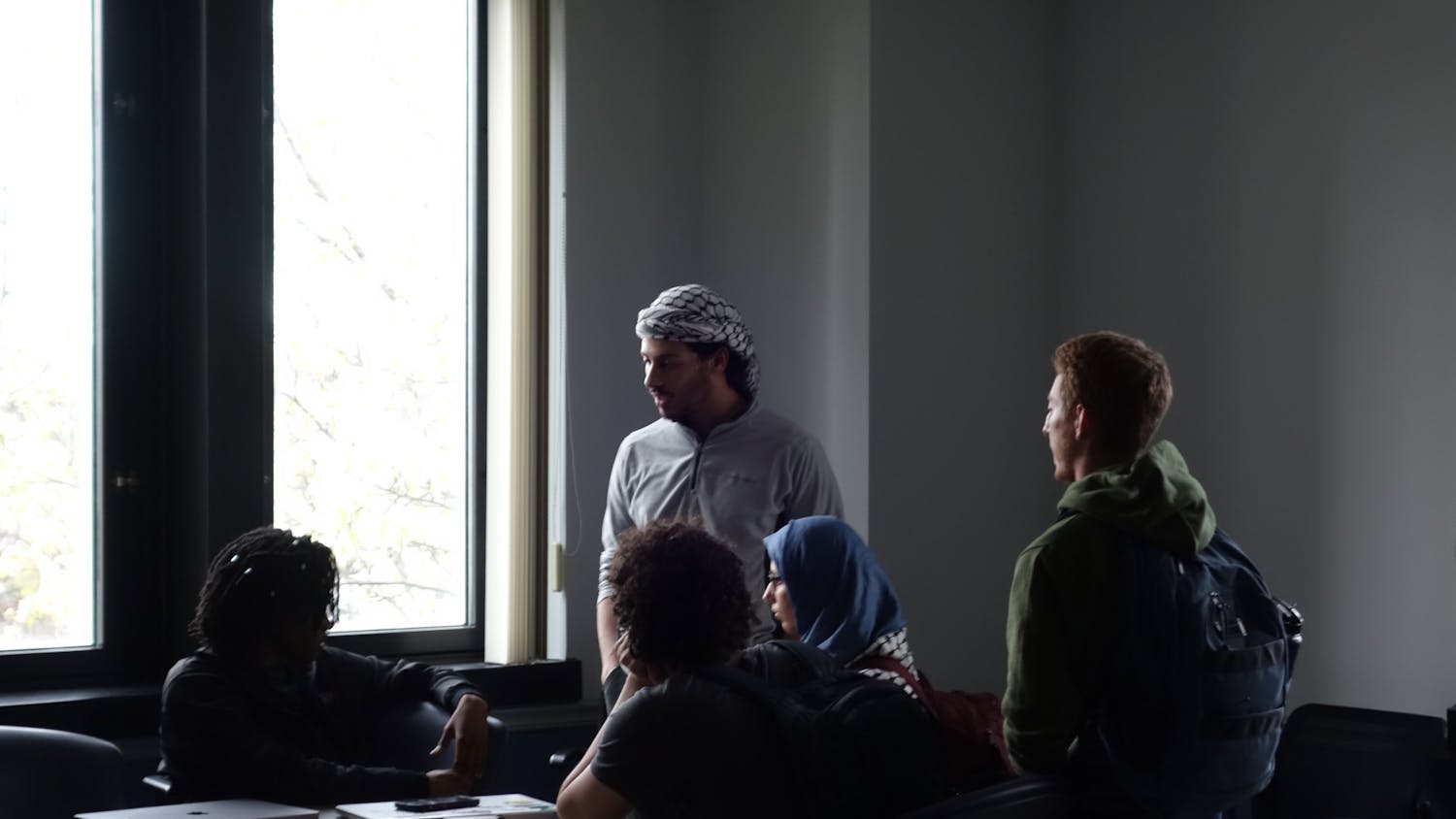Three thousand miles, 200 hundred buildings, 20 cities - all in one hyper-fast, 15-day whirlwind tour.
Twenty-two of UB's School of Architecture and Planning students spent their winter break exploring the Southern United States as apart of Architrek - a two-week domestic study tour that capped off a seminar taught by Greg Delaney, an adjunct assistant professor of architecture. The excursion began on Dec. 27 in Dallas, Texas and wrapped up in Miami, Fla., on Jan. 12 - just in time for the start of the spring semester.
Delaney spent six months planning the tour, which he said is a re-imagined version of the legendary architectural "Grand Tour."
"It used to be that all architects went on the Grand Tour, which is really just seeing the major monuments of the world: Rome, Italy, Greece, the pyramids in Egypt, Turkey, the ancient ruins," he explained. "And now the idea of the Grand Tour is kind of subsided because of technology."
In today's digital age, anyone can log onto the nearest computer or smartphone, search Google Earth and suddenly be transported to another place, Delaney said. Anyone today can see infinite photos of the Pantheon and the Parthenon in ways never imagined. Back in the 1600s, architects would tour Europe's most cultural spots as a culmination to their education, he added.
Delaney wanted to change the definition and scope of the Grand Tour - recontextualizing it and rethinking it for today's students. He wants to revive this practice of traveling and seeing the world's wonders.
Most architecture students today take a study abroad trip, but most of those voyages are place-based in one city - a chance to really study the culture, people and the urban building and planning. To really immerse themselves in the culture, students spend up to five weeks - equivalent to one term - in an area. Most of these programs tour Europe and countries abroad, taking students out of their domestic sphere and into a whole new world.
"I think one thing about the states people think, 'Oh the states. I know the states,'" Delaney said. "And what's so shocking is how little most people actually do know. There's this feeling like you know the history, you know the cities in a way that's more intimate than something foreign - actually what you find is that these cities are so foreign."
Delaney had only visited one of the 20 cities - New Orleans, La. - before the trip. Many of the students had been to more of the cities but had never experienced them in this way - mostly because the tour focused on lesser-known structures.
Colleen Creighton, a master's student in the school of architecture, lived in Atlanta, Ga., one of the cities the group visited. She was shocked to realize she didn't know the city quite as well as she thought.
"It was kind of cool to see Atlanta from this viewpoint. Because I lived there, I didn't go on tours of the city," she said. "Some of the architecture I didn't even know was there, and I was like, 'Oh I lived here and never even saw this building before.'"
The trip started in Dallas, Texas, and hit Austin, San Antonio and Houston before leaving the Lone Star State. They saw the missions in San Antonio, which date back to the early 18th century, and explored a world where the Apache were forced to become Spanish and pledge loyalty to a distant, almost-invisible king. The Perot Museum of Nature and Science opened in Dallas in December, and students noticed the stark contrast of three centuries.
They spent New Years in New Orleans and the French Quarter - one of the trip's "free days" - and they saw the "Make it Right" houses. These 150 sustainable homes were built in the city's ninth ward, the neighborhood most devastated by Hurricane Katrina, and brought 350 people back to live in an area that was completely desolate.
"It was cool to see how far they've come but yet we can still see so much damage from Katrina even though it was [eight] years ago," Creighton said. "That was pretty mind blowing."
They went across the Panhandle and into Florida, visiting Seaside. The students were fascinated by the neighborhoods The Truman Show was filmed in. They moved back up to Selma, Ala., which was an important site for the Civil Rights Movement.
The tour concluded in Miami, Fla., which Delaney and Creighton found to be completely foreign despite it being a part of the United States. It even reminded Creighton of her study abroad trip to Barcelona, Spain.
"Miami is just a kind of cultural city and the type of urbanism [there] is so different," Delaney said. "It has this modernist urban fabric with this kind of playful twist."
Each day started at 7 a.m. and went on for about 14 hours, and Delaney planned every day down to the minute.
"The trip can only be successful through this hyper-planning of time," he said. "It went very much according to schedule."
For example, the guidebook would budget walking time from 9 a.m. until 9:15 a.m. and then another 30 minutes to see a building before getting back on the bus to drive for another 15 minutes.
"The long days were manageable, especially with Greg leading us on, and always having enough pep in his step for the rest of us," said Ariel Resnick, a senior architecture major, in an email.
Because Delaney felt that architecture guidebooks out in the market weren't sufficient, he had his students create the 200-page book that directed the trip. Each student was assigned five buildings to outline, and each was required to present and lead discussion at his or her destinations.
Each student was also required to sketch every building or site visited. This created a mini portfolio or catalog the students can reference in future classes or their careers.
"With so much more of a digital focus in the profession, students aren't getting as much of a foundation in hand drawing," Delaney said. "We don't spend an hour sketching. It's not about producing something beautiful that you could sell on the street."
Creighton added she feels much more confident in visually representing her ideas - an important skill in today's job market that could potentially set her apart from other candidates.
The architecture students returned to Buffalo on Jan. 12, just in time for the start of the spring semester. Many would love to take advantage of this sort of expedition again and see as much of their home country as possible.
"This is not vacation," Delaney stressed. "It was a time where you could incorporate academia but in a fun way. It's travel, but it's not really vacation."
Delaney is already planning next winter's trip - a West Coast voyage that spans from Seattle, Wash. to Phoenix, Ariz. He hopes more students will take advantage of study abroad options, both internationally and domestically.
Email: news@ubspectrum.com





